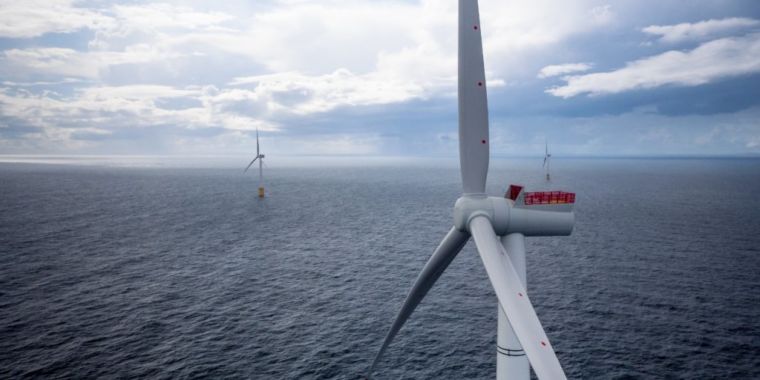
Enlarge (credit: Statoil) The world's first commercial floating offshore wind farm, called Hywind, started sending electricity to the grid last October. Since then, the six-turbine, 30MW installation has been working well. Really well. In fact, Hywind has had a 65-percent capacity factor over the last three months according to Statoil, the Norwegian mega-corporation that built the wind farm off the coast of Scotland. (Capacity factor measures a generation unit's actual output against its theoretical maximum output. A capacity factor of 100 percent means the wind farm would be sending 30MW of power to the grid every minute of every day since it has been in operation.) Hywind's capacity factor exceeds the average capacity factors of many sources of electricity. According to the Energy Information Administration (EIA), onshore wind installations in the US had an average capacity factor of about 36.7 percent in 2017. Solar photovoltaic installations had an average capacity factor of 27 percent in 2017. Even conventional hydropower only has an average capacity factor of 45.2 percent. Of course, comparing Hywind's 65-percent capacity factor in the winter, when wind is blowing at its hardest in Scotland, to the average capacity factor of other renewable installations over the whole year isn't quite fair—we can assume that Hywind will have a lower capacity factor in months when winds are milder. But Statoil says that similar offshore wind installations achieve a capacity factor of 40 to 60 percent in winter, suggesting that there's an advantage to be gained in floating wind farms: the turbines can be placed farther out to sea where wind is more consistent and stronger. Read 4 remaining paragraphs | Comments source: https://arstechnica.com/?p=1268899 #Headlines by: Megan Geuss
Original Post: https://arstechnica.com/information-technology/2018/03/first-floating-wind-farm-has-performed-better-than-expected/
Original Post: https://arstechnica.com/information-technology/2018/03/first-floating-wind-farm-has-performed-better-than-expected/
No comments:
Post a Comment